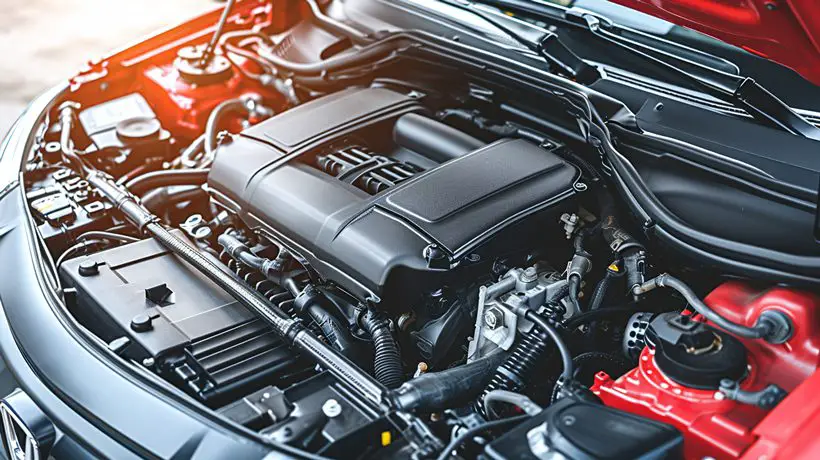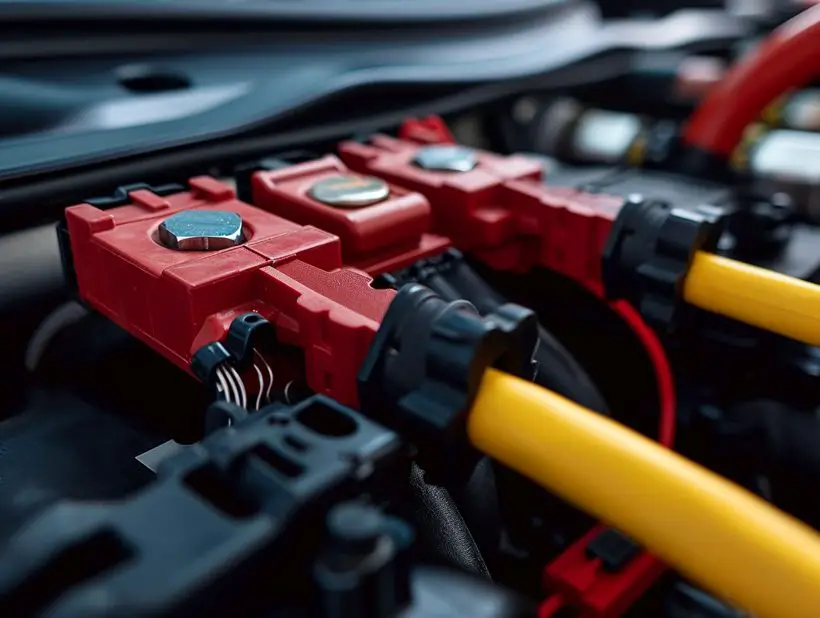Ever been cruising down the road when suddenly your battery light flickers to life on the dashboard? It’s a sign we can’t ignore. This little warning is often the herald of a charging system failure, a problem that can leave us stranded if we’re not careful.
Understanding the signs of a failing charging system is crucial for any driver. It’s not just about a faulty battery; it’s the health of the entire electrical system at stake. We’ll dive into the common culprits behind that ominous battery light and what they mean for our ride.
Don’t let a lit-up battery symbol on your dash spell disaster for your day. We’re here to shed light on the situation, ensuring we’re equipped to handle it with confidence. Stay tuned as we explore the signs of charging system failure and keep our journeys smooth and uninterrupted.
Common Causes of a Battery Light Coming On
When we notice the battery light on our dashboard, it’s crucial to pinpoint the cause. Here are some typical reasons this warning light may activate:
- Faulty Alternator: The alternator is responsible for charging the battery while the car is running. If it fails, the battery will not recharge properly, triggering the light.
- Worn Serpentine Belt: This belt powers the alternator. If it’s worn or loose, the alternator can’t work effectively, leading to a poorly charged battery.
- Corroded Battery Connections: Corrosion on the terminals can interrupt the battery’s ability to charge and communicate with the car’s electrical system.
- Aging Battery: Batteries have a finite lifespan. An old battery might not hold a charge as it should, resulting in the light turning on.
- Electrical System Issues: Issues such as a blown fuse or a malfunctioning electrical sensor can also cause the warning light to come on despite the battery being in good condition.
Once the battery light illuminates, it’s essential we don’t overlook these potential issues. Ignoring them could result in unexpected vehicle shutdowns or more significant damage to the charging system. Regular maintenance checks will often reveal these problems before they escalate.

To better understand the prevalence of such issues, we can refer to the following table, which outlines common charging system failures and their estimated frequency:
| Charging System Component | Estimated Failure Rate |
|---|---|
| Alternator | 30% |
| Serpentine Belt | 20% |
| Battery Connections | 25% |
| Battery Age | 15% |
| Electrical System Issues | 10% |
Addressing charging system failure signs as soon as they are noticed is the best way to maintain our vehicle’s reliability and safety on the road. By staying informed about what each sign might indicate, we’re better prepared to resolve issues promptly and efficiently. Regular servicing and timely interventions can often prevent these problems from escalating, ensuring that we aren’t caught off guard by a sudden battery light alarm while driving.
Understanding the Charging System
To fully grasp why the battery light might come on, it’s crucial to understand the vehicle’s charging system components and their functions. The charging system in a car plays a pivotal role in maintaining the battery’s charge while powering the electrical systems during operation.
At the heart of this system lies the alternator, a critical component responsible for generating the electricity needed to replenish the battery and power the vehicle’s electrical components. When the engine runs, the alternator transforms mechanical energy into electrical energy, ensuring systems such as headlights, radio, and climate control receive adequate power.

Another vital part of the charging system is the battery itself, storing the electrical energy needed to start the car and providing power to the electrical systems when the engine is off. Together, these elements work seamlessly to keep the electrical system functioning reliably.
The serpentine belt, also known as the drive belt, transfers the engine’s mechanical energy to the alternator. It is crucial that this belt maintains proper tension and condition to prevent slippage or breakage, which would disrupt the charging process.
Voltage regulators are equally significant, maintaining the voltage level required to keep the battery charged without causing damage due to overcharging.
Let’s bullet point the core components for clarity:
- Alternator: Generates electricity to charge the battery and power electrical systems
- Battery: Stores electrical energy for starting the engine and powering systems when the engine is not running
- Serpentine Belt: Provides energy from the engine to the alternator
- Voltage Regulator: Ensures consistent voltage to prevent overcharging or undercharging
Proper functioning of these components is essential for a reliable charging system. Regular maintenance checks can often discern the health of these critical parts. By keeping a close eye on them, drivers can preempt many common issues that result in the battery light illuminating. Remember, each component we’ve discussed is integral to not only keeping the light off but also preserving the longevity of your vehicle’s electrical system.
Significance of the Battery Light
When the battery light illuminates on the dashboard, it’s a clear indicator that something’s amiss in the vehicle’s charging system. It’s often the first warning sign car owners encounter signaling the potential for a charging system failure. Understanding this light’s significance can help us preempt costly repairs and inconvenient breakdowns.
Primary Functions of the Battery Light include:
- Alerting the driver to the fact that the vehicle’s electrical system is not charging properly.
- Prompting an immediate inspection of the charging system components to avoid a complete vehicle shutdown.
- Indicating that the battery’s charge is low which could lead to ineffective engine starts and poor performance of electrical accessories.
Being proactive when this light comes on may save us time and expense in the long run. It’s important not to ignore it‚Äîeven if the car seems to be running fine.

Possible Reasons for Illumination‚ could range from a loose battery cable, a failing alternator or serpentine belt, to an aged battery no longer holding a charge.
We should schedule a vehicle inspection if the battery light stays lit, flickers, or comes on only when driving. Qualified mechanics can perform a battery and alternator check using specialized equipment, and this proactive measure can prevent unwanted surprises while on the road.
Symptoms of a Failing Charging System
When dealing with a potential charging system failure, it’s essential to recognize the symptoms early on to prevent further damage or even a breakdown. We’ll break down the telltale signs that can alert you to a problem before it escalates.
- Dimming or Flickering Lights: This often occurs when driving at night. If your headlights or dashboard lights dim or flicker, it’s a signal that your alternator may not be generating enough power.
- Electrical Issues: You might notice that power windows are slower to roll up or down, or your infotainment system behaves erratically. These glitches suggest insufficient power supply from the charging system.
- Difficulty Starting: Experiencing issues getting your car to start could indicate that your battery isn’t getting charged properly due to a malfunctioning charging system.
- Strange Noises: Listen for unusual noises such as whining or grinding coming from the alternator area. This could imply that internal bearings are failing, affecting performance.
- Battery Warning Light: The most direct sign is the illumination of the battery warning light on your dashboard while driving, signaling that the charging system should be checked immediately.
- Swelling Battery Case: Extreme temperatures or overcharging can cause your vehicle’s battery case to swell, which is a visible sign of trouble with the charging system.
Here’s a quick table with the symptoms and their possible implications:
| Symptom | Possible Implication |
|---|---|
| Dimming/Flickering Lights | Alternator issues |
| Electrical Glitches | Power supply problems |
| Starting Difficulties | Faulty battery or charging system |
| Unusual Noises | Alternator bearing failure |
| Battery Warning Light | Immediate inspection needed |
| Swelling Battery Case | Overcharging or temperature issues |
Lastly, it’s worth noting that a malfunctioning serpentine belt, crucial for driving the alternator, can also cause these symptoms. If left unchecked, a worn or broken belt can lead to a complete charging system failure. We can’t stress enough the importance of timely inspections and maintenance to stay ahead of charging system mishaps.
Taking Action: What to Do When the Battery Light Comes On
When we notice the battery light illuminating on the dashboard while driving, it’s crucial to understand that immediate action can help mitigate the potential for more extensive repairs or even being stranded roadside. Here’s what we should do in that situation:
- First and foremost, we’ll want to assess our immediate environment. If we’re in heavy traffic or at highway speeds, we need to find a safe place to pull over if the car’s performance deteriorates.
- Next, we’ll reduce the electrical load on the charging system. This means turning off non-essential electrical components like the radio, air conditioning, and heated seats.
- If the situation allows, we should drive to a trusted mechanic or automotive service center. By doing so, we ensure that trained professionals can diagnose and rectify the problem.
- In case we’re far from a service center and the car seems to be performing adequately, it’s advisable to head straight there without unnecessary stops.

As the journey continues, we’ll monitor the dashboard for other warning lights or changes in vehicle performance. This could include unexpected noises, a loss of power, or flickering lights. Any of these signs could indicate a worsening condition.
It’s essential we check the serpentine belt as well, as a quick visual inspection may reveal if it’s loose or has snapped. However, we’ll only do this after ensuring the car is off and it’s safe to open the hood. If we’re not confident in what we’re looking for, it’s better to wait for professional assistance.
By understanding these steps, we reinforce our readiness in addressing charging system errors effectively. Our approach not only helps prevent further damage but also contributes to our safety and that of our vehicle. Remember, the battery light isn’t just a casual warning‚Äîit’s a clear indicator that our car needs attention.
Conclusion
We’ve explored the critical signs of a failing charging system and the steps to take if our battery light comes on while driving. Remember, it’s paramount to act quickly and wisely to avoid being stranded or facing more significant issues down the road. Trusting our vehicle to a professional as soon as possible can save us time and money in the long run. Let’s stay vigilant on the road and keep our car’s charging system in check for a smooth, uninterrupted journey every time we hit the ignition.
